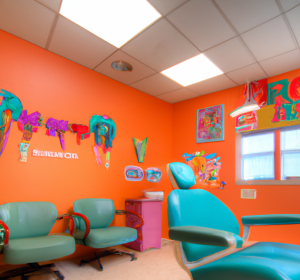Black teeth: Reasons Why Kids’ Teeth Get Black
As soon as I saw that my son’s teeth were turning black, I set out to find out what was going on. I learned that not taking care of your teeth properly is often to blame. Kids can forget to brush their teeth or floss properly, which lets plaque and tartar build up. After a while, this buildup can turn black, mostly near the gum line. To avoid this, you must brush and floss your teeth every day.
Dental caries, or cavities, are another reason I found. When we didn’t notice that my daughter had a small cavity, it got worse and went black. As the decay spreads, it can make the tooth darker. That’s why it’s important to go to the dentist regularly to catch cavities early, before they get worse.
Black spots on the teeth can also be caused by damage to the teeth. When my son fell off his bike, he hit his front tooth. The tooth turned dark after a few weeks. The doctor said that the discoloration was caused by internal bleeding from the impact. For this kind of accident, you need to see a dentist right away to fix the damage underneath.
It can also be caused by genetics. It turns out that some kids, like my niece, have enamel hypoplasia, which makes their enamel weaker and more likely to get stained. If you take good care of your teeth and see your dentist regularly, you can control this problem.
What you eat is also very important. Sugary and acidic drinks and foods, like soda and candy, can wear away enamel and make teeth black. My kids really enjoy candy, but we have to limit how much they eat and make sure they rinse their mouths out with water after eating sweets to keep their teeth from getting stained or decaying.
Helpful Information and Tips for Maintaining Your Child’s Oral Health
What to Expect and How to Prepare for Your Child’s Initial Dental Appointment
How to Keep Your Teeth White and Avoid Discoloration
Getting into a good dental hygiene habit really helped us keep our teeth from turning discolored. The first thing I did was make sure my kids used fluoride toothpaste to brush their teeth twice a day. We used songs and clocks to make brushing fun, and we made sure they did it for the full two minutes. Being this thick helped get rid of plaque and stop the buildup that causes coloring.
Another important step is flossing. My kids found it hard at first, but I taught them with floss picks, which are easy for little hands to hold. When you floss, you get rid of food and gunk between your teeth that your toothbrush can’t reach. When they started flossing every day, their tooth health got a lot better.
Getting regular tooth check-ups is very important. Every six months, we go to the dentist for cleanings and checkups. During one visit, the dentist saw early signs of plaque growth that I had missed. This kept the problem from getting worse. During these trips, the dentist can also use fluoride treatments, which make enamel stronger and help keep teeth from turning yellow.


Promoting Good Dental Habits at Home
I thought it was important to make dental care fun. We used apps with timers and prizes for brushing for two minutes, which made it fun to do. My kids loved the challenge and the virtual prizes they got for brushing their teeth every day.
I always made sure my kids saw me floss and brush my teeth. When we brushed our teeth together, an ordinary job became a chance to spend quality time together. When they saw how seriously I took my tooth health, they did too.
We also made a star chart with a small prize at the end of the week for kids who brushed and flossed their teeth every day. This good feedback made them look forward to going to the dentist and gave them a sense of success.
It was necessary to go to the doctor regularly. We talked about these trips as fun adventures instead of stuff that had to be done. It was important to find a youth dentist who made the visit fun and stress-free. My kids actually looked forward to going to the dentist, which kept them interested in tooth care at home.
Getting kids to develop good dental habits at home requires a number of fun and effective ways to make brushing and flossing fun for kids. Dental care can be fun and educational by using apps and rewards to make brushing into a game, brushing together as a good example, and educational tools like books and videos. Reward systems, like sticker charts with small prizes, help people be consistent and give them good feedback. Regular dental trips that are framed as fun adventures keep kids interested and allow professionals to keep an eye on their dental health. By using all of these techniques together, parents can help their kids create good dental habits that will last a lifetime and keep their teeth and gums healthy.













































